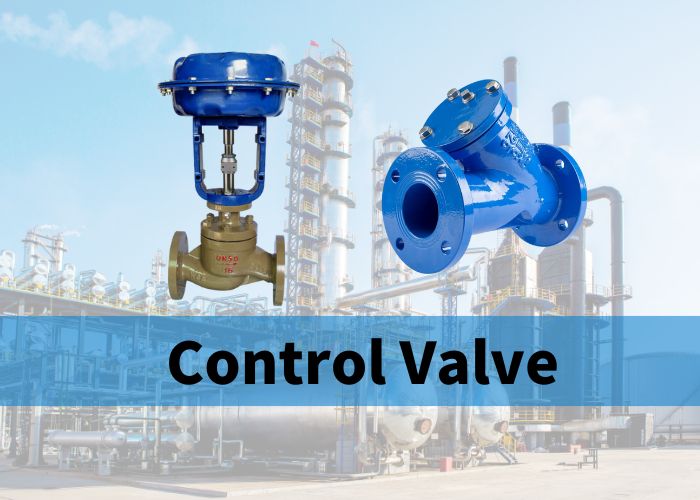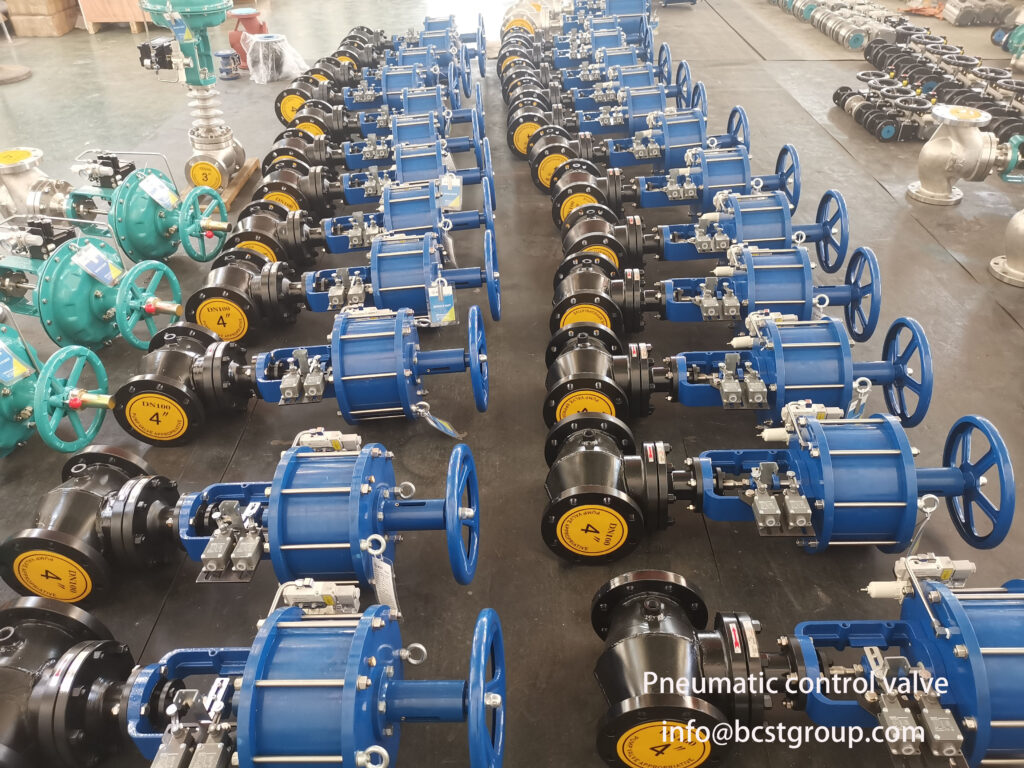
Control valve noise is classified into three forms.
- The mechanical vibration of components
- Hydrodynamic noise
- Aerodynamic noise
Mechanical Noise in Control Valve
The mechanical noise produced by the control valve is caused by:
- Valves vibrate due to random pressure variations within the valve body and/or fluid impingement on movable or flexible elements.
- Vibration in the piping system.
- Improper valve design
- Structural problem
Mechanical vibration is an indicator of valve component deterioration. The frequency and intensity of the tremor are low. Mechanical vibration issues plague stem valves more than cage valves. The cage valve has a greater support area and is less likely to produce vibration.
Hydrodynamic Noise
Liquid flows generate hydrodynamic noise. When a fluid travels via a confined path, vapor bubbles occur. This results in a pressure change. This is known as flashing. The initial stage of cavitation is flashing. However, flashing can occur without the presence of cavitation.
Cavitation is similar to flashing in that pressure is restored in the exit flow stream. It signifies that the bubbles have returned to a liquid state. The imploding bubbles’ energy dissipation generates noise. Cavitation generates noise in a valve with a wide frequency range. It does, however, have significant energy at frequencies below 600 Hz. The hydrodynamic is an indication of potential trim component deterioration.
Hydrodynamic noise is not a major concern in terms of human safety because it is often low in frequency and intensity and, as such, does not endanger workers.
Aerodynamic Noise

Unsteady flow is the primary source of aerodynamic valve noise. Turbulence in the flow stream is caused by the unstable flow. It is often referred to as aeronautics or flow noise.
The aerodynamic noise depends on the following:
- Size of the control valve
- Differential pressure across the control valve
- Flow rate
How to Reduce Control Valve Noise?
There are two basic approaches to controlling valve noise source treatment and path treatment. Excessive noise generated within the control valve is suppressed by the source treatment noise. The noise following noise creation in the valve is reduced by the path treatment.
We cannot eliminate the noise in a valve, but we can reduce it up to a great extent that plant operators can bear. We can improve plant efficiency and the life of the valve by minimizing noise.
There are very few methods of eliminating the control valve noise.
How to Reduce Noise?
Source processing and path processing are methods of valve noise reduction.
- Direct Approach (Source Treatment)
Noise generation can be reduced by using source treatment.
Common source treatments include:
- Noise-attenuation control valve trims
- Inline diffusers
- Vent diffusers that minimize turbulence.
- The process of eliminating the source of noise, which is typically valve trim, and dispersing pressure drop in the valve port region by employing low noise trims is known as source treatment. To limit noise production in valves, we employ noise reduction trim. The acoustic energy is reduced by limiting the effect and strength of the shock wave.
- Treatment of the source to reduce the sound energy at the source is the most effective method and is widely used.
- The low noise cage trim valves contain a number of small orificial parts. The quiet valve concept of dividing acoustic energy into smaller flow pathways is appropriate.
- The acoustic energy is reduced by limiting the effect of the shock wave and its strength. The most typical issue with this procedure is solid material becoming caught inside the microscopic openings. The vengeance causes the acoustic energy to move into a higher frequency band. Because of the limited flow pathways, the most typical issue encountered while utilizing this technique is filling the solid material trapped inside.
- We can lessen valve noise generation by minimizing the pressure drop across the wall orificial parts in phases. Each stage imposes a defined constraint on the flow, allowing it to defuse or expand. This sort of restriction is installed just downstream of the valve output. As a result, the limitation takes the shape of a plate with several orifices.
The device is commonly referred to as a downstream expansion plate or diffuser. The diffuser is prone to become clogged with sold particles.
- Indirect Approach (Path Treatment)
Path treatment is a means of lowering noise after it has been generated from the valve trim to the pipe’s exit. The path treatment principle is to reduce sound propagation and transmission to the external sound field.
Typical path treatments include:
- Increasing the pipe thickness,
- Adding acoustical or thermal insulation,
- Adding inline pipe silencers.
Proper Valve Sizing
The correct valve sizing is critical. The incorrect selection of the control valve may result in excessive noise.
Inline Silencer
There are two types of silencers.
- Resonator silencer
- Absorptive silence
A resonator silencer’s main purpose is to reduce control valve noise. Many chambers in the resonator silencer have various tuned frequencies. The resonator silencer works well for a small frequency range.
The most frequent design is an absorptive silencer. The fibrous packing materials in the absorptive silencer vary. The fibrous packing materials absorb noise. Sound energy is converted into modest amounts of heat as sound waves move through the fibers of the absorptive material.
Pipeline Thickness
The noise generated in the control valve transits from the valve outlet to the downstream piping. Increasing the pipe wall thickness is a method that we can use to reduce the overall noise radiation.
Acoustical insulation
Applying 50 mm thick insulation to pipes decreases noise.
Sound barrier or enclosure
To reduce noise, the control valve and pipework might be enclosed in a sound barrier.
Standards you may refer to:
- Occupational noise exposure, OSHA -1910.95
- Control Valve Aerodynamic Noise Prediction (ISA 75.17)
- Industrial process control valves IEC 60534-8-4:2015
- Control valve sizing according to ISA 75.01
- ISA 75.07 Noise measurement in the laboratory






